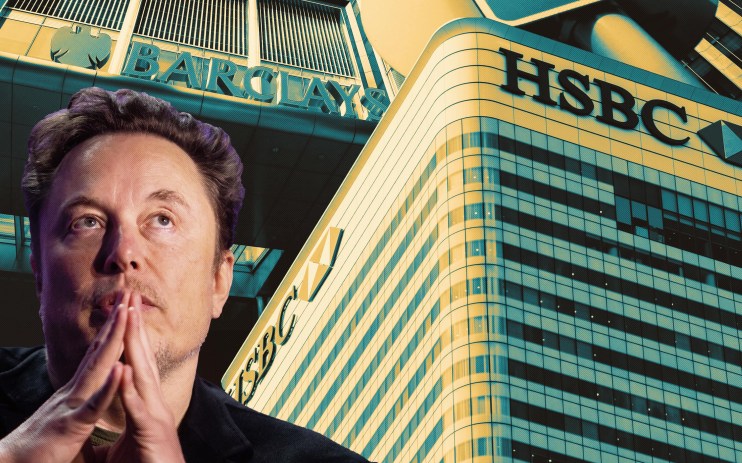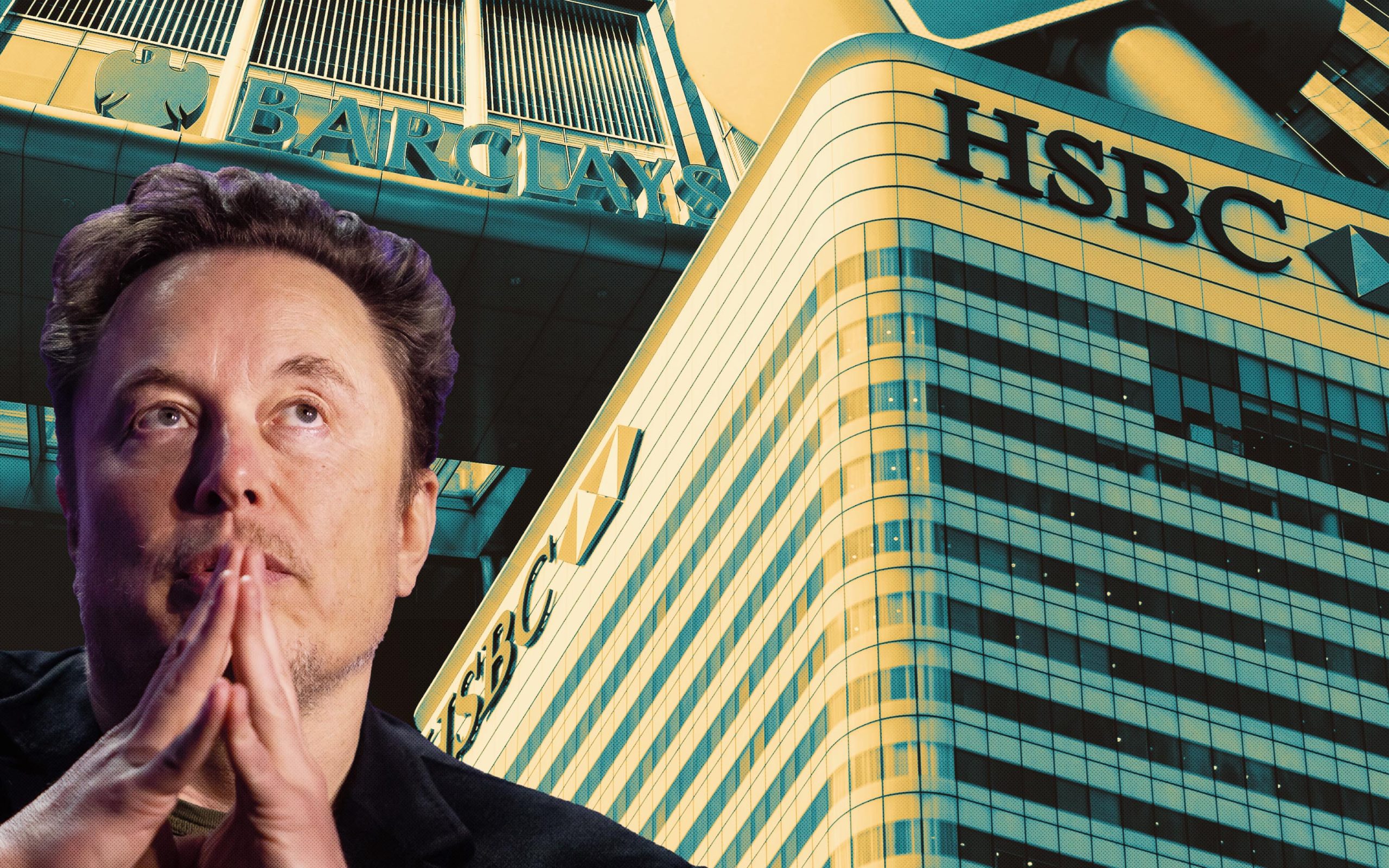| Updated:

The chiefs of the UK’s Big Four banks are taking a leaf out of the Elon Musk playbook in their strident bid to slash costs.
Natwest’s Paul Thwaite, Lloyds’ Charlie Nunn, HSBC’s Georges Elhedery and Barclays’ CS Venkatkrishnan are in the midst of major cost-cutting endeavours that bear similarities to Musk’s Department of Government Efficiency (DOGE) mission.
Musk initially pledged to save $2tn across the US government – later halved – through aggressive measures including mass firings, consolidating agencies and stripping back departmental budgets.
The Tesla chief centered his plans around drastic simplification – a move echoed in the playbook of British bankers as they seek to charm investors and boards.
William Howlett, financials analyst at Quilter Cheviot, told City AM simplification has become a “consistent buzzword” for lenders as they sought to streamline legacy systems.
Perhaps the most ambitious tightening of pockets comes from HSBC, where Elhedery has eyed savings of $1.5bn by the end of 2026.
Elhedery has spent his near-12 months since taking the helm at the lender deploying strategies to reduce expenses, namely a significant scaling down of European operations.
The lender put ten per cent staff in France on the chopping block, sold its Canadian unit to the Royal Bank of Canada for $9.96bn and most recently offloaded its life insurance division for £260m.
As part of Elhedery’s plans, he split the business into “eastern markets” covering the Asia-pacific and the Middle East and “western” with the Americas and Europe.
Howlett said: “Banks continue to optimise where capital is allocated in their operations to protect profitability targets by focusing on areas where they have scale.”
International divisions at HSBC’s peers have been ripe for the chop, with Natwest exiting from Ireland and Barclays selling its consumer finance business in Germany.
Barclays’ move, completed in February 2025, released around €4bn (£3.4bn) in risk weighted assets and increased the bank’s CET1 ratio – a key measure of a lender’s financial health – by ten basis points.
CS Venkatkrishnan, known as Venkat, is in the middle of a three-year plan that targets a reduced reliance on the lender’s investment bank, which made up over 50 per cent of its first-quarter income.
The bank tapped global consultancy giant Mckinsey in a bid to identify cost-saving areas across its investment arm in hopes the unit will produce a 12 per cent return on tangible equity by 2026.
A DOGE-like cull
Three of the four big banks reduced their headcount in 2024, according to data from Macrotrends, with Barclays being the exception.
HSBC reported the steepest decline of 4.33 per cent to 211,304.
In Musk-fashion HSBC launched major culls of divisions in the last year with investment bankers facing the biggest threat.
The bank was reported to be mulling an exit from parts of investment banking business in UK, US and Europe in January leading to a fleet of job cuts that rivalled the brutality of Musk’s threats to federal workers.
City AM revealed in February the lender had put a number of bankers on the chopping block on the same day pencilled in for bonuses.
Lloyds, whose headcount dipped 2.14 per cent in 2024, has also trimmed its headcount in its bid to streamline operations.
The bank laid out plans at the beginning of the year to slim down back-office functions in a move that will impact 1,600 roles.
Fresh data from The Banker revealed British banks have shed workers at the fastest pace since 2018 in the last year.
Banks’ extensive branch networks have also emerged as a top target to slash costs.
A staggering 6,300 bank and building society sites closed in the last decade – equal to around 53 a month, according to data from Which.
Barclays and Natwest have closed the most sites at 1,236 and 928.
Howlett said the “rationalising” of branches reflected the firm’s digital pushes, “despite the potential for political pushback”.
Over 370 branches are pencilled in for 2025, with Lloyds-owned Halifax and Santander leading the pack at 99 and 95. But Barclays and Nationwide have hit pause on shuttering sites in a bid to reassure customers and attract new ones.
Efficiency in focus
Amid this, legacy lenders are battling rising competition from challenger banks.
Howlett said the “modern tech stacks and in some cases no branch overhead” helped give the leaner challengers an edge in their fight to capture some of the market share from traditional banks.
But banks have hit back and used efficiency savings to beef up their tech offering, echoing a key staple of DOGE to use IT upgrades to boost efficiency.
Lloyds placed some 6,000 jobs in IT under review as it raced to modernise its digital development, City AM revealed in February.
The bank said the transformation strategy would aim to create a “highly skilled workforce” positioned to lead its tech drive.
Cronin said: “I expect that AI-driven efficiencies will serve to substantially trim cost bases in the years ahead.
“The main areas of focus are the automation of middle and back office tasks, AML and compliance support, and IT security.”
HSBC is already said to be mulling using AI to streamline back-office jobs, according to reports from Financial News, and Natwest sealed a milestone collaboration with OpenAI in March this year.
“AI will also drive efficiencies in a sales and marketing context as well as serve to meaningfully speed up front office bankers’ analytical workloads,” Cronin said.
Pressures mount
The focus on savings is no new endeavour for lenders.
Banking analyst John Cronin told City AM operational efficiency had always been a “key focus of bank management”.
But Cronin said stagnating revenue “like we have seen in the case of many European and UK banks owing to declining official rates” made the top “spring more into focus”.
Lenders are expected to feel the squeeze in the coming year after enjoying post financial crisis high interest rates for a majority of 2024.
Since August 2024 there have been four interest rate cuts with markets pencilling in two more for the rest of 2025.
“Lenders are to some degree at the mercy of the economic cycle,” Russ Mould, investment director at AJ Bell, told City AM.
“Banks face constant challenges and they can never afford to stand still.”
The FTSE 100’s listed banks – Barclays, Natwest, HSBC, Lloyds and Standard Chartered – booked an all-time high of £50.3bn in profit in 2024 and returned £35bn to investors.
All surpassed analyst profit expectations, except for Lloyds due to a hefty motor finance provision.
“Analysts expect no progress in 2025,” Mould said, “in fact, they are currently expecting a dip to £49.6bn”.
Mould said this emphasised the lack of room for “complacency” across lenders and would help drive cost-cutting missions.
As banking chiefs push ahead with their DOGE-eque missions, it comes as Elon Musk bids farewell to the White House.
The tech tycoon’s latest spat with President Donald Trump has resulted in the White House going into attack mode on the Tesla chief.
Trump warned: “We might have to put DOGE on Elon. You know what DOGE is? DOGE is the monster that might have to go back and eat Elon”.
Thwaite, Nunn, Venkat and Elhedery may be borrowing from Musk’s playbook but as they unleash their own cost-cutting beasts to woo boards and investors, they’ll be hoping the spotlight doesn’t fall back onto them.







